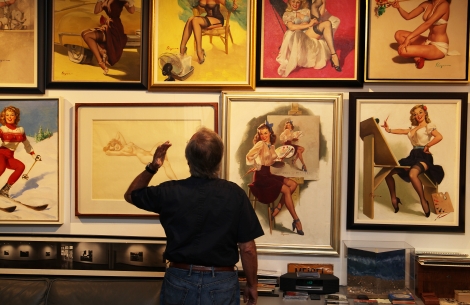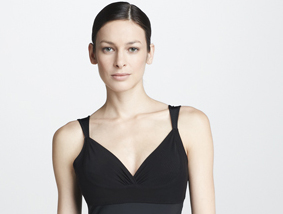Story and photographs by Bob Rozycki
The cosmic elements of earth and fire are coaxed to life in the hands of Bob Clyatt.
Born of clay, fire and smoke, his sculptures crackle with life and humanity.
The naked bodies of his cold, white figures are enmeshed in craquelure, bringing to mind the cellular construction of mankind. Or perhaps they represent the cracking of an animal’s eggshell, with the true spirit trying to escape.
His preference for the white male and female figures is perhaps influenced by the three years he spent in Japan in the late 1980s. It was there that he witnessed the near-indefinable butoh – men and women clad only in white body paint and loincloths dance or perform or hang suspended by their feet in the air. The purpose of the performance can be a political statement or a form of Zen. Clyatt says the performers “are moving to access their deep authentic core.”
And perhaps that is what he is trying to achieve as he works in a steel-and-glass-encased studio behind a home he shares with his wife and son in Rye.
To achieve the cracks in his sculpture, he follows the principles of the centuries-old method of raku-fired pottery in which clay is placed in a very large noborigama kiln where temperatures as high as 2,400 degrees are achieved.
The process is labor intensive, as well as inherently dangerous.
The kiln that Clyatt uses belongs to sculptor Tony Moore at his mountaintop home in Putnam County. “It’s five days of feeding the kiln with wood around the clock” with other artists. In addition to the stark white sculptures he creates, Clyatt also creates smaller pieces with other clay and achieves amazing colors without the addition of glaze. “The color is created by the atmosphere of the kiln” as well as where it is placed in the giant oven.
Fusing man-made with the natural, Clyatt says the end result is “something that endures and brings energy into a room or home.”
In achieving the look of his sculptures, Clyatt must carefully remove the piece from the kiln while it is red-hot. And that requires a bit of breath holding as well as Kevlar gloves to fend off the extreme temperature of the piece. Clyatt places the piece in a vessel that he has already lined with pine needles, cones and grasses. Once he sets the piece in, the elements burst into flame. He places a lid over the vessel allowing the smoke to pickle the clay.
“The carbon goes into the clay and makes interesting cracks.”
Clyatt began sculpting 12 years ago after careers in computer programming, product development, founding a couple of Internet companies and a design firm that made websites for Sotheby’s, Dow Jones and Microsoft, and creating distance-learning software that he eventually sold.
He started taking classes in 2001 and describes himself as a full-time sculptor for 10 years. The number of pieces he has created in that decade is prolific and inventive, now mixing different media with his sculptures. One unnamed piece shows a male figure made via the raku-fired method with his head covered in a dark-blue towel made of linen and polymer. Clyatt’s eyes fill with concern as he recalls the inspiration for the piece.
It came about one day as Clyatt emerged from his shower, his head bowed underneath a towel thinking of the recent calamities – Fukushima nuclear disaster and the earthquake and tsunami – that had befallen Japan.
New pieces that Clyatt has been working on are a vagino-phallic “tree of life” series from which faces of men and women crown like babies heads from the birth canal. The pieces stand 39 inches high.
While his pieces range from 23 inches to life size, Clyatt says that with so many exhibition spaces being so huge, “there’s a need for big art.”
His latest work is a just-larger-than-life sculpture of a male nude that is in his studio undergoing his discerning touchups.
With clay having its limitations (it shrinks 15 percent from creation to being fired) Clyatt says “the trouble with clay is being to scale up,” to create those big pieces for the exhibition spaces.
“It’s a challenge,” he says. One way he might overcome it is by heading off to China to learn from the masters of large-scale clay art.



